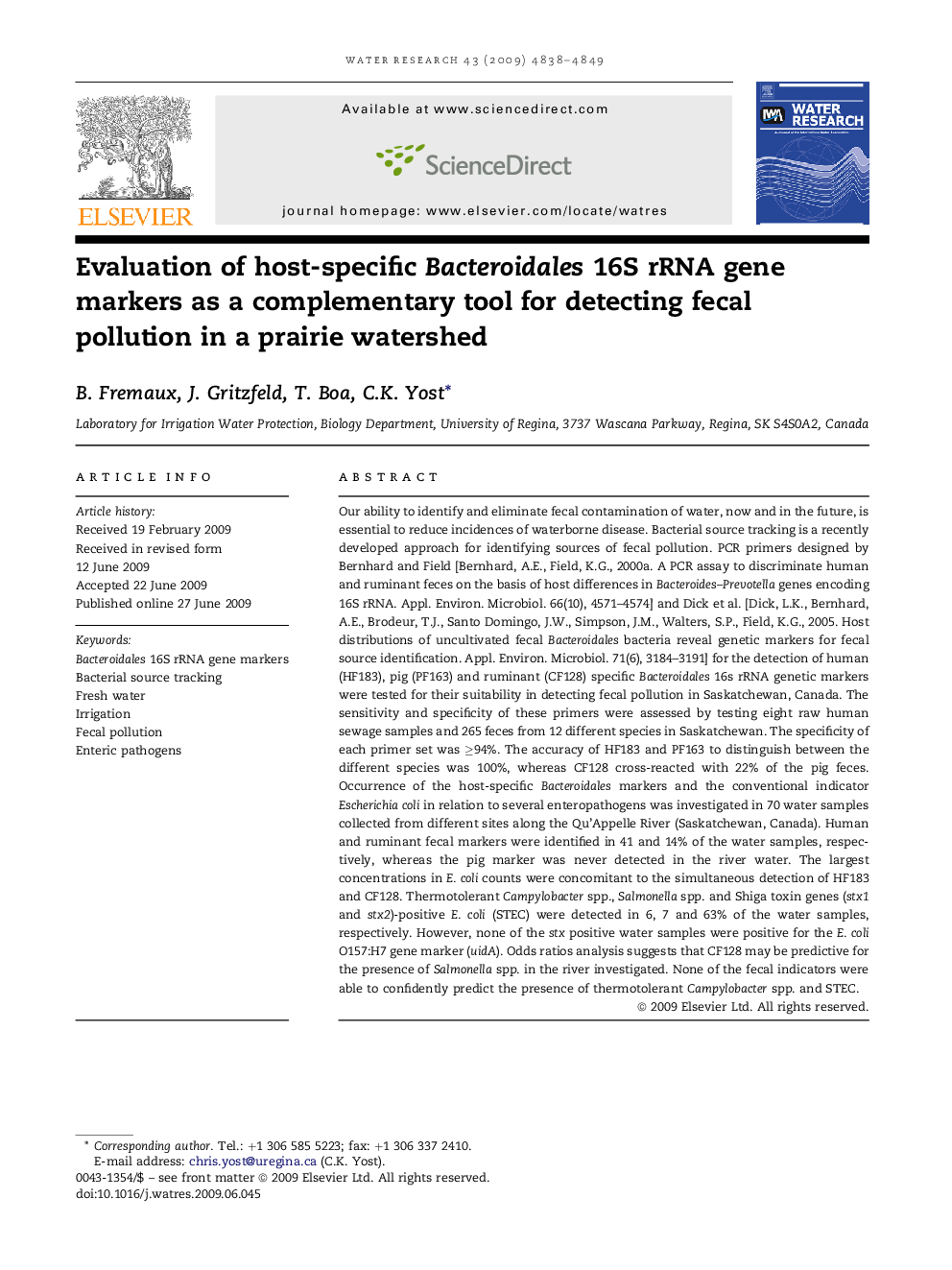| کد مقاله | کد نشریه | سال انتشار | مقاله انگلیسی | نسخه تمام متن |
|---|---|---|---|---|
| 4484405 | 1316919 | 2009 | 12 صفحه PDF | دانلود رایگان |

Our ability to identify and eliminate fecal contamination of water, now and in the future, is essential to reduce incidences of waterborne disease. Bacterial source tracking is a recently developed approach for identifying sources of fecal pollution. PCR primers designed by Bernhard and Field [Bernhard, A.E., Field, K.G., 2000a. A PCR assay to discriminate human and ruminant feces on the basis of host differences in Bacteroides–Prevotella genes encoding 16S rRNA. Appl. Environ. Microbiol. 66(10), 4571–4574] and Dick et al. [Dick, L.K., Bernhard, A.E., Brodeur, T.J., Santo Domingo, J.W., Simpson, J.M., Walters, S.P., Field, K.G., 2005. Host distributions of uncultivated fecal Bacteroidales bacteria reveal genetic markers for fecal source identification. Appl. Environ. Microbiol. 71(6), 3184–3191] for the detection of human (HF183), pig (PF163) and ruminant (CF128) specific Bacteroidales 16s rRNA genetic markers were tested for their suitability in detecting fecal pollution in Saskatchewan, Canada. The sensitivity and specificity of these primers were assessed by testing eight raw human sewage samples and 265 feces from 12 different species in Saskatchewan. The specificity of each primer set was ≥94%. The accuracy of HF183 and PF163 to distinguish between the different species was 100%, whereas CF128 cross-reacted with 22% of the pig feces. Occurrence of the host-specific Bacteroidales markers and the conventional indicator Escherichia coli in relation to several enteropathogens was investigated in 70 water samples collected from different sites along the Qu'Appelle River (Saskatchewan, Canada). Human and ruminant fecal markers were identified in 41 and 14% of the water samples, respectively, whereas the pig marker was never detected in the river water. The largest concentrations in E. coli counts were concomitant to the simultaneous detection of HF183 and CF128. Thermotolerant Campylobacter spp., Salmonella spp. and Shiga toxin genes (stx1 and stx2)-positive E. coli (STEC) were detected in 6, 7 and 63% of the water samples, respectively. However, none of the stx positive water samples were positive for the E. coli O157:H7 gene marker (uidA). Odds ratios analysis suggests that CF128 may be predictive for the presence of Salmonella spp. in the river investigated. None of the fecal indicators were able to confidently predict the presence of thermotolerant Campylobacter spp. and STEC.
Journal: Water Research - Volume 43, Issue 19, November 2009, Pages 4838–4849